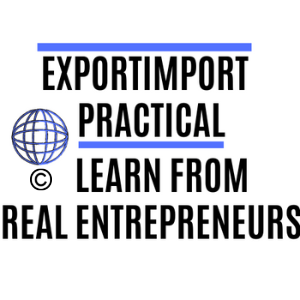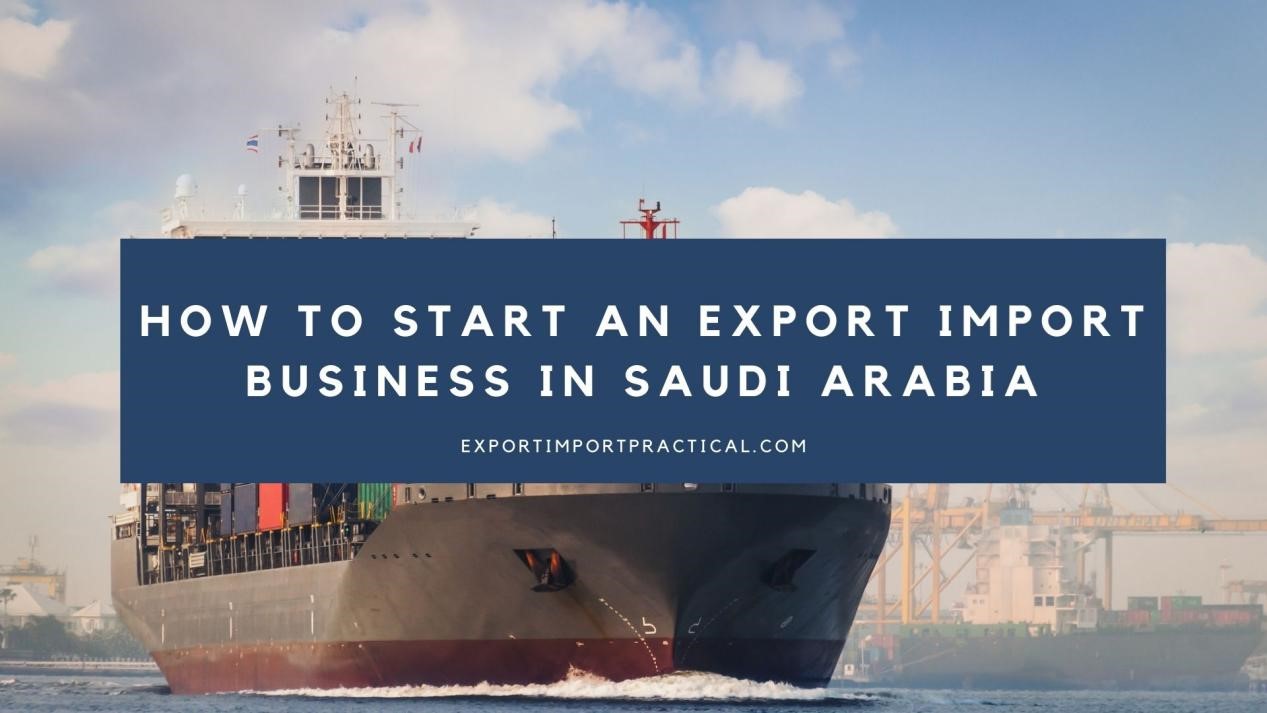Starting export or import business with Saudi Arabia can be exciting and rewarding. The countries of the Middle East region have huge financial potential and high purchase power, thanks to the oil. But most of them are in lack other natural resources, and arable land. This is the reason, there is a demand for imported agricultural products, food, consumer goods, vehicles, machinery. One of those countries – Saudi Arabia, imports such goods in a huge volume.
So, Is that a potential market for your export business? What are the Saudi,s high potential import and export products, how to export to Saudi Arabia, and how to import from there? How to find customers and how is the right way to start a business there? All the above and other important questions we will handle in this article, all to help you start and grow your own international business and start exporting to Saudi Arabia. We also hope the following will give you many business ideas related to Saudi Arabia.
Overview of Saudi Arabia trade and economy
First of all, it is important to keep in mind this country is a Muslim country. The Halal industry, which provides standards-compliant products and services for Muslims, has become an essential industry with great potential and continues to grow in the region, especially in Saudi Arabia. Besides, the import demand in Saudi Arabia is relatively high compared to other countries in the GCC region due to its large population. It is considered a good opportunity for businesses looking to invest and find new export markets.
Below is an illustration that gives an overview of this country’s export and import sectors and economy. It is important to understand the country’s economical structure and main export and import sectors because from there come the business opportunities.
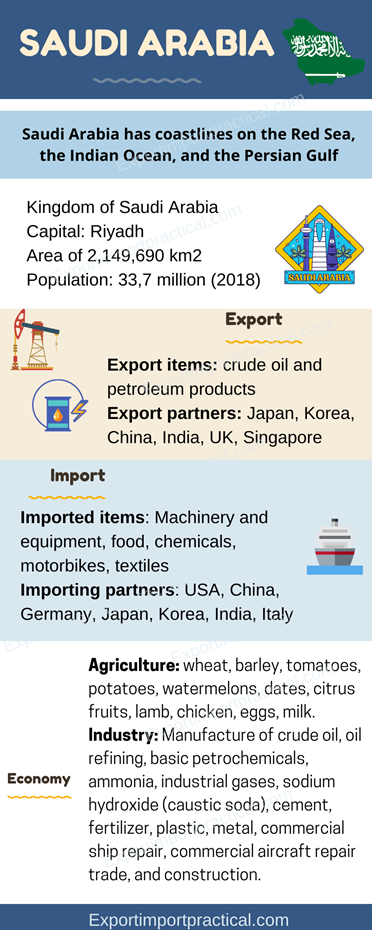
Saudi Arabia occupies a large area of the Arabian Peninsula and has coastlines on the Red Sea, the Indian Ocean, and the Persian Gulf. It is the only country with a coastline on both the Red Sea and the Persian Gulf. Saudi Arabia, administratively, is divided into 13 provinces and cities, and its capital is Riyadh.
It is the largest economy in the Gulf region. This country is also one of the largest oil and gas producing and exporting countries in the world. Saudi Arabia’s main resource is oil, with reserves of more than 265 billion barrels, accounting for more than 16% and second in the world.
Saudi Arabia imports mainly food, chemical machinery, consumer goods … With most of the essential consumer goods such as rice, sugar tea, coffee, meat, poultry … are tax-free. However, it implements a policy of free trade, with respect to commodities, which is highly dependent on competitive prices, quality of goods, and delivery on time, so this is a competitive market.
Thanks to oil and gas reserves and taking advantage of this factor to develop the oil and gas industry, while the mostly desert terrain is not conducive to the development of agriculture and production, the Arab economy of Saudi Arabia relies heavily on exports of petroleum products and oil and gas extracts.
Saudi Arabia’s major export
Crude oil

Saudi Arabia is the world’s largest crude oil producer, with an output of about 4 billion barrels a year. The great development and prosperity of Saudi Arabia entirely thank the exploitation of the vast reserves of oil and natural gas (reserves of about 265 billion barrels). In addition, Saudi Arabia also has gas, copper, gold, and bauxite.
Saudi Arabia’s crude oil export in May 2020 was about 6 million barrels a day, of which exports to the US market are just over 600,000 barrels a day.
Decreasing oil production and export means also reducing associated gas output. Gas is used as a feedstock in the petrochemical industry and for electricity generation.
Polymer ethylene
Saudi Arabia ranks first among the countries exporting LLDPE to China with 38,650 tons.
The top three polymer exporting countries in 2021 to China are Saudi Arabia, South Korea, and Taiwan. Compared to the same period in 2018, China’s total polymer imports from Saudi Arabia increased by about 30% and 7% for imported from South Korea and Taiwan in 2019.
Saudi Arabia’s major import
Rice
The natural conditions (mostly desert) are not favorable for the development of agriculture, so Saudi Arabia has to import agricultural products to serve the domestic consumption demand.
Saudi Arabia is the largest rice import among the GCC countries with an import value of US $ 1.67 billion in 2014, equivalent to 1.4 million tons.
The largest rice supplying countries are India and Pakistan (mainly basmati rice, prices range from 900 to 1700 USD / ton). Saudi Arabia and the UAE are the two largest rice importers among the GCC countries. The value of Saudi Arabia’s rice imports from India and Pakistan accounts for 90% of Saudi rice imports. This can mean a great business opportunity for Indians.
Seafood

Saudi Arabia has the largest food deficit in the region and is importing 70% of food and foodstuffs. Therefore, food security is a problem in these countries. It means that this country will continue to depend on seafood and seafood imports and gradually reduces exports to focus on domestic consumption.
Saudi Arabia and Iraq are the most potential seafood markets. Seafood prices in the Arab region are rising, proving the rising domestic consumption. This is an opportunity for seafood exporting businesses in nearby countries, who want to rise their export.
Tea and coffee
The habit of drinking tea and coffee is rising globally. In 2020, Saudi Arabia imported about 60 000 tons of tea and 220 000 tons of coffee. The main supplier regarding coffee is Brazil. But this can also mean a great opportunity for other coffee and tea countries like Vietnam, Indonesia, India, Malaysia, African countries also for China (tea).
Machinery and equipment for oil & gas and energy sectors
Because the country produces and processes a lot of oil and oil-based products and chemicals, then there are a lot of processing plants. A big volume of special equipment, machinery are being imported for these plants. The machinery includes for example pumps, valves, special reactors, columns, boilers, and high-tech apparatus and monitoring devices, etc. This kind of equipment is expensive and it is a lucrative export business for manufacturers and trading companies in China, India, and Europe.
On the other hand, it is not easy to access the right purchase-contacts for such equipment. The end-users of such equipment and goods are often large, state-owned companies like Saudi Aramco. That’s why, in order to export such equipment to Saudi Arabia you should have local agents, who can help to reach the right contacts and doing the local marketing for you.
How to start exporting to Saudi Arabia
The export process and documentations consist of many steps which are closely related to each other. Therefore, to successfully export to Saudi Arabia by sea or air, you need to understand the process and documentation in each step.
Step 1. Negotiate and sign a contract

After you have got a customer, who is ready and interested in the order, you need to negotiate with customers and finally sign a foreign trade contract for exporting the shipment. This is an order stage.
When communicating and negotiating with the Saudis, you must know that they are excellent traders and negotiators. They bargain everywhere and all aspects of the trade, whether at the store or in the negotiation room. Make the decision slowly. The negotiation procedure with Saudis can be somewhat bureaucratic and slow. Do not use high-pressure tactics as it will backfire and can lead to the rejection of ordering from you.
At the end of this step, you should have the sales-purchase order (PO) signed (contract signed) with the importer from Saudi Arabia. You should also provide a proforma invoice for the importer, we suggest at least 20% of advance payment after the order has been signed.
Read also: How to export export orders aborad.
Step 2. Apply for an export license
The export license is proof of legitimacy, allowing your country goods and services traded with other countries. An export permit is a document related to a specific good exported or imported by various routes. If you do not have an export license, you can go to your country’s authority to apply for it. Depends on the regulations of each country, some products do not need an export license. Also, in some countries there is even no need to apply for an export license, for example in most of the European countries there are such requirements.
Also important to bear in mind for exporting, the original set of documents must be enclosed with the translation into Arabic if required. Certain products, such as antiques, animals, or ancillary products, require special export licenses and permits.
Step 3. Book and get an empty container
Booking is an exporter making a reservation with an international shipping line or forwarding company (a carrier carrying import and export goods). Booking is an easy job. It is crucial to choose a good shipping company, book early to timely transport goods. Definitely ask offers from many different service providers to see, which one can give you the best prices and conditions. Sometimes even no need to book a full container.
Step 4. Prepare and check the export goods
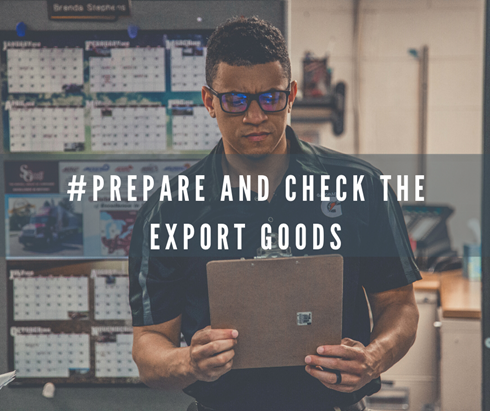
After the order has been signed and advance payment received, you need to plan the delivery. Need to produce or outsource goods acc the quantity and quality promised in the contract.
Before shipment, you should carefully check the following information:
- Do goods need a permit for export? Is cargo allowed to unload at the port of destination?
- Although the buyer places an order, regarding the delivery there can be some extra costs, you shall agree on all with the customer.
- Is your product dangerous? Do you have an MSDS?
- Is the packing list correct or not? Does the net weight match?
- If you ship an OOG (Out of Gauge), you need to ensure that you have an export license.
- Make sure that the words are correct in every document when exporting any shipment. The mistake of documents can waste lots of money and time.
- Does the customer need a certificate of origin (CO)?
The regulatory requirements:
A Certificate of Conformity (CoC) required for each shipment (for specified products) exported to Saudi Arabia, and only SASO Accredited Compliance Body has the authority to issue this certificate.
There are also other necessary certifications for certain products, including SASO EER energy labeling program (for air-conditioner, freezer, washing machine, air conditioner products) degrees, bulbs, and motors); CITC certification for telecommunications and radio products, and GSO certification for tires, motor vehicles, and children’s toys.
We recommend to make sure with your customer at the ordering stage, all the required certifications.
Regulations on food exported to Saudi Arabia:
- Importers must have a valid Business Registration Certificate (registered food business)
- Exporters, as well as a food product (s) (conditional), must be registered with SFDA
- Food products must comply with the SFDA regulations and other requirements
- Food products for export to Saudi Arabia must comply with Halal requirements according to GSO 993 and GSO 1-2055 (slaughtering & processing practices).
- Chilled and frozen food products must comply with GSO 323
- Food products must have a specific expiration date specified according to the GSO Standard (GSO 150) and have the minimum required shelf life for export to Saudi Arabia.
Request labeling information
Labeling information must be in Arabic. . Labeling must conform to GSO 9 requirements for consumer information and respect for Arabic culture and Islamic values (from images to content).
Step 5. Package, shipping marking
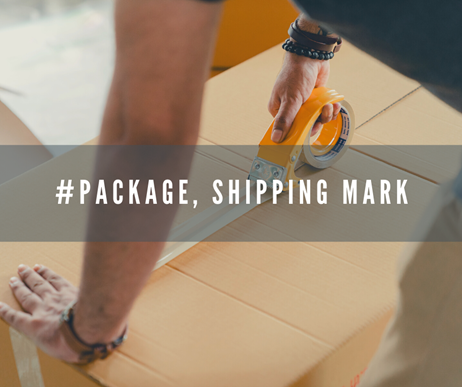
Here are a few things to keep in mind when packing:
- Shipment must have an origin (certificate of origin)
- Items must be packed carefully and ensure safety
- Shipping address is clearly stated
- Each box, carton, pallet, the container shall be numbered and the numbers shall be presented in the packing list with goods description. Make sure all match.
- Don’t ship the goods without receiving the balance payment.
The Saudi customs office requires that commercial invoices issued by the exporter include an accurate description of the goods exported to Saudi Arabia, specifically:
- For equipment: model number, brand, manufacturer’s full name, etc.
- For other goods: description of the material, manufacturer’s full name, brand, etc.
Regarding the bill of landing, three copies are required, with signatures. The documents must have the vessel name and shipping date, and full address of the manufacturer and or exporter. Items shipped to Saudi Arabia. Origin of each item and components indicated – The description of the goods: list of ingredients and origin of each package, The signed declaration shows the information is accurate.
Step 6. Buy shipment insurance
Single insurance is a document issued by the insurer to the assured.
- Certification for a covered shipment, helping to address the risks that may occur in international transport.
- Solving part of damage discharged in sea transport because insurance is a form of dispersing risks according to community principles.
- It is a necessary document to lodge an insurance claim and receive insurance indemnity upon disputes or litigation.
The exporter provides insurance certificates to the importer along with the other export documentation. The certificate must include: Actual insured amount, description and value of insured goods, ship name, the port of loading, Saudi Arabia’s port of discharge, and address.
Read also: Risks in export-import and how to manage these.
Step 7. Do customs procedures (for importer)
The followings are the documentation that Saudi Arabia importer must present to the customs, to clear the custom. To clear the custom it is normally the responsibility of the importer, but the exporter must provide the full set of required documentation to the importer (customer).
Customs documentation for Saudi customs include the followings.
- Letter of the introduction of the company
- Customs declaration
- Commercial Invoice: 1 copy
- Bill of lading (Bill of Lading): 1 photocopy, with the enterprise’s seal + shipping carrier’s seal (shipping carrier or forwarding company)
- International freight bill (with ExWork, or FOB conditions), CIC surcharge, hygiene, document fee: 1 copy
- Certificate of origin: 1 original (if any)
- Certificate of specialized inspection (if goods are subject to inspection): 1 original with the certification of the specialized agency
- Other documents (if any, depending on the type of goods): A copy of Quality Certificate (Certificate of Quality – CQ), Certificate of Analysis (Certificate of Analysis – CA), Health Certificate (Health Certificate) …
Besides, you should also prepare a copy of other documents for reference or presentation, when needed: Foreign Trade Contract (Sales Contract), Packing List (Packing List), and relevant documents such as catalogs, photos, technical documents of the shipment.
How to start a low-cost export-import business in Saudi Arabia

It is not easy to do international business in Saudi Arabia when you do not have enough free capital to spend on inventory. Many people are looking for a low-cost business that can bring high efficiency and ease to do. Usually, the less capital you invest, the less risk you will face. In today’s digital world, the internet makes everything cheaper and easier. In below, we are giving an introduction to the 2 possible ways, how to start an international business with low investment. Both ways are different in nature and for sure, if one way is suitable for one person, it might not be suitable for another person.
1. Start an online export-import business
How to use the internet effectively to do import and export business? Finding customers and getting orders, using the internet? How to find suppliers and sources using the internet? For the main questions, we are giving simplified answers and instructions below. The information below is not enough to start selling online, but it gives you an overview of the most important elements.
Step 1: Create a website

To facilitate your business, first of all, you must prepare your business plan and strategy accordingly. Before making a business plan, one should conclude exhaustive market research, collect important information, analyze and make conclusions. Only, after you have enough information you can discover the opportunities and potential products, and based on this you can start planing your business. All elements of the business, including the website or online-shop, should be acc to your plan.
If you plan to export or sell to Arabia you should change the language to Arabic. The pictures and illustrations should be suitable for local people and acc to the local culture.
With the experience of many years, we recommend using WordPress because it is a versatile software. You can learn once and create many types of websites that are quite flexible and easy to edit. Using WordPress you can create a high-quality sales website or online store.
Step 2: Marketing for your website/ products
To actually sell and get order, you must promote the products to those who need it. You can try online advertising and marketing channels like:
- Facebook Advertising
- Google Advertising
- SEO
- Marketing by blog
- Email Marketing
- Youtube marketing and advertising
If using an advertising service much depends on how well you target and how appealing is the marketing message. It is possible to lose a lot of money, if you target wrongly or if you use un-professional advertising company. Sometimes also not effective, If you do marketing yourself. It can take a while before you learn to do it properly. You should consider and set out a specific plan before starting to do online marketing. If you are starting it the first time, we suggest using a help of a professional or use a professional marketing company.
Step 3: Choose a shipping method
After receiving orders from customers, you need to proceed with the delivery. Today there are many shipping services you can choose to ensure your customers receive goods quickly and conveniently. Also, some manufactures can provide you a drop-shipping service.
So now you can own yourself a business without having to spend too much capital. What you need to do is learning to improve your skills and make your business more professional.
2.Become a agent of the Saudi Arabia import-export companies
If you are a person with business knowledge and excellent sales skills in this field, but you do not have enough capital to open a company, then being a partner for companies is for you. Many import and export companies want to find people who can help them find a source of goods or international customers, and if you can help them make big deals, the commission you receive will be high.
Earning commission all depends on how well and fastly you can close the deals. It depends on your knowledge, ability to communicate, and self-study. Learn, how to start as an export-import agent.
Conclusion
Saudi Arabia is an economic center of middle east with a long history and is also home to many corporate headquarters.
The country has a different culture from the rest of Asia and the west and it is a Muslim country. On the other hand, because of the wealthy population and the fact that there is not enough arable land, there is a huge opportunity to export especially food and natural products to Saudi Arabia. Demand is also for machinery and equipment, technology for the enormous oil/gas industry in Saudi Arabia.
We suggest to start from research, creating a local connections, visiting local interesting trade fairs before making plans of exporting to Saudi Arabia,.
If you want to learn how to start your own export-import business online or offline, then we have online courses and programs which will give you the best guide to start an international business from scratch. We have also tools and resources which help you to grow and expand your business and get more customers and raise profitability.
You are advised to take courses and use the resources ad tools listed below:
- Export-import business courses and programs
- Most popular online exim course: “Zero to first deal“
- Resources and action plan for exporters/importers, online sellers.
